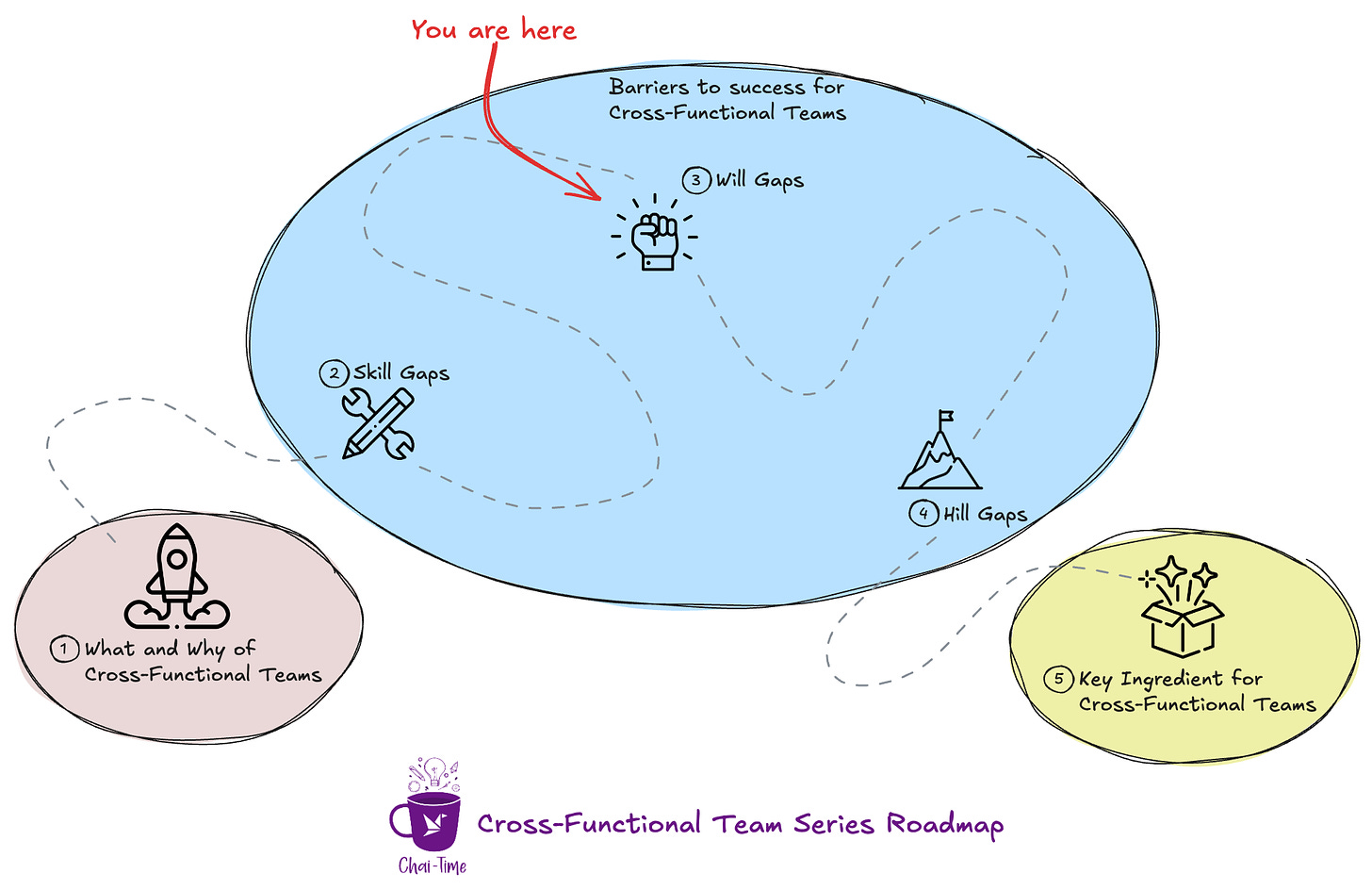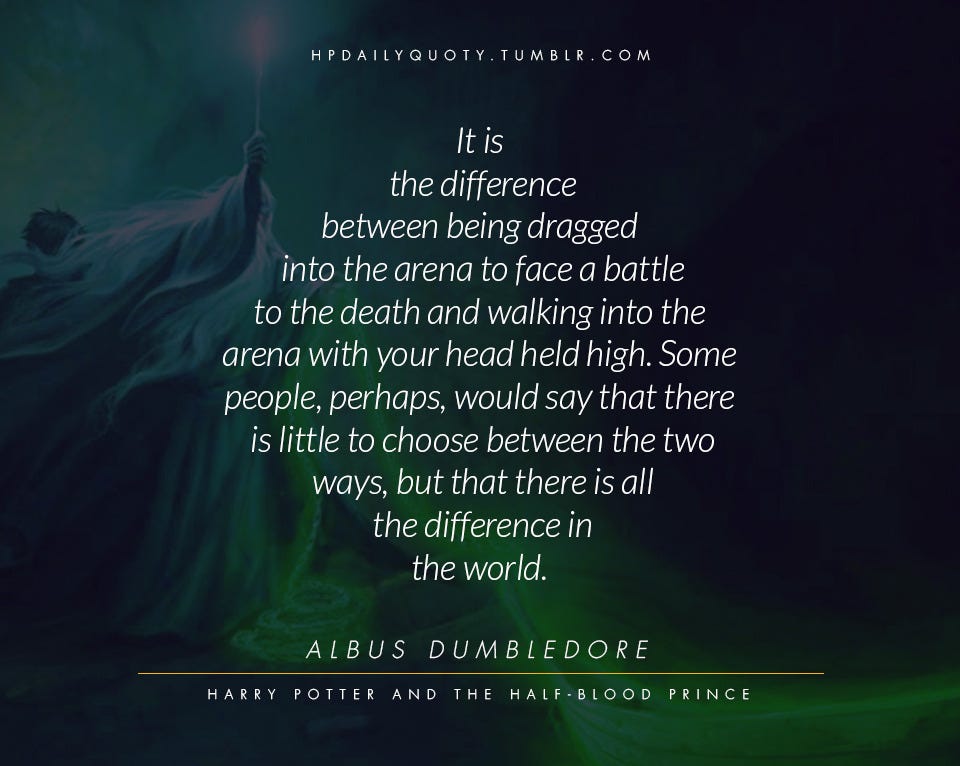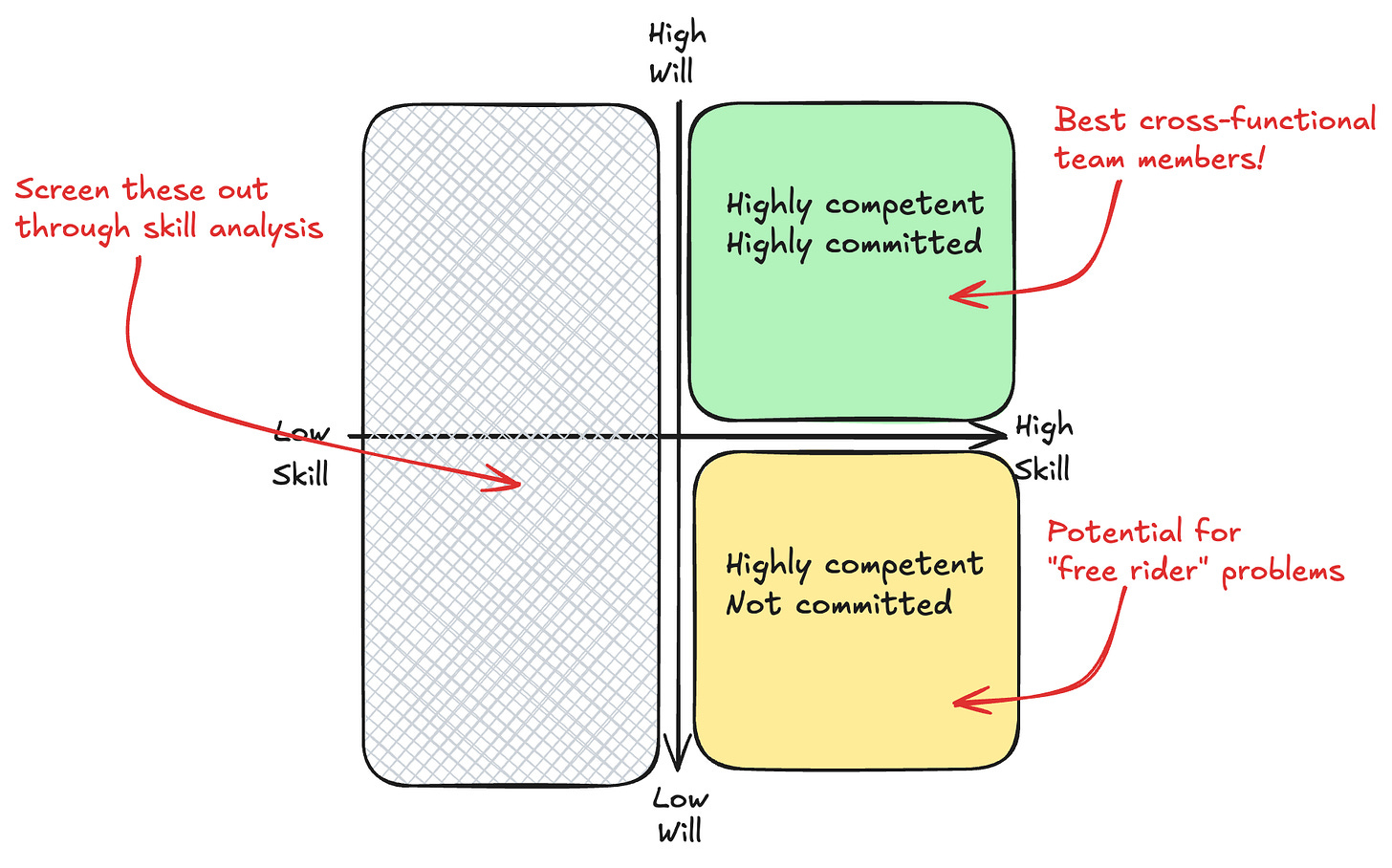Commitment
The third post in ChaiTime's paid-subscriber series on Cross-Functional Teams (CFTs). This one deep-dives into Will Gaps that are a barrier to success for CFTs.
Welcome to the third post of the Cross-Functional Teams series! Here is the series roadmap to orient you.
I was once forming a cross-functional team for an important feature. It would span all Google Workspace products. I had almost settled on the team lead as my first choice. Then, I remembered my independent study. So, I decided to have a 1:1 with the person to ask if they wanted to join the team.
I was expecting that they would be enthusiastic and excited about this. After all, I was their director and the team executive sponsor. I was guaranteeing this as a career-changing, high-impact, high-visibility project for them!
But their question completely surprised me! They asked:
Do I have a choice?
The Free Rider Problem
Have you ever been in a group where you had one or more group members who did not do their share of work?
This phenomenon is called the “free rider problem." It’s an economic concept that occurs when people benefit from a resource or service without paying for it. In cross-functional teams, this is a member who enjoys the perks of being on the team. They may seek the career boost or prestige that comes with it. But, they do no actual work.
My study, through relevant papers (Rowe) and interview questions, found some interesting things about this problem!
Consider becoming a paid subscriber to ChaiTime today!
Paid Subscribers get access to the full post archive and in-depth, special series like this one each quarter.
Sponsors of cross-functional teams often underestimate the "free-rider" problem.
My survey and interview respondents described this problem as "ghosting," "quiet quitting," or "disagree and don't commit."
This problem hurts the team's ability to meet its goals. It harms morale and erodes trust in cross-functional teams.
Those with "free riders" on their teams were less inclined to join a cross-functional team again.
My study did uncover some good solutions to this problem.
A "group frame" helps reduce the "free rider" problem. It makes team members see themselves as a cohesive group, not as individuals.
Clear accounting structures can establish the "group frame." This includes defining the team's goal and members' roles.
A strong way to set the "group frame" is to offer each potential team member a choice. This empowers them and holds them accountable.
The Power of Choice
Let’s go back to the tech-lead in my story. As a Harry Potter fan, that conversation reminded me of this quote from one of the HP books:
A cross-functional team may not be as dire as Harry's battle with Voldemort. But, don't underestimate the power of choice!
If you sponsor a cross-functional team, do this next time: Let each member choose whether, when, and in what role to join the team.
If you are a potential team member, ask the question my tech-lead asked me - “do I have a choice?”
This is a powerful tool for accountability and empowerment. Once the team member accepts their role after this chat, it is their choice. Thus they will feel obliged to do their best in this role.
But why does this work? Let’s dive a little deeper to understand the power of choice.
The Skill-Will matrix
We previously covered the Skills necessary to succeed in a cross-functional team. Today, let’s look at another ingredient of success in cross-functional teams - Will.
The Skill-Will matrix is a popular concept in people management for coaching reports. This applies in the cross-functional team context to solve the “free rider” problem.
If you screen for skills to succeed in cross-functional teams, a choice conversation helps to pick those with High-Will/High-Skill. Those team members will be both very skilled and very dedicated to the team's success. Using a "group frame" structure will boost a team's motivation and clarity.
The tech-lead’s decision
Following these insights from my study, I went back to my report in the next 1:1 and said "Yes you do have a choice. You have the right skills but this is a question of will so you should choose if you'd like to be there as the lead.”
A few months later, this person accepted the role. They were key to the team's success!
Readers, how do “will gaps” show up for you at work?







